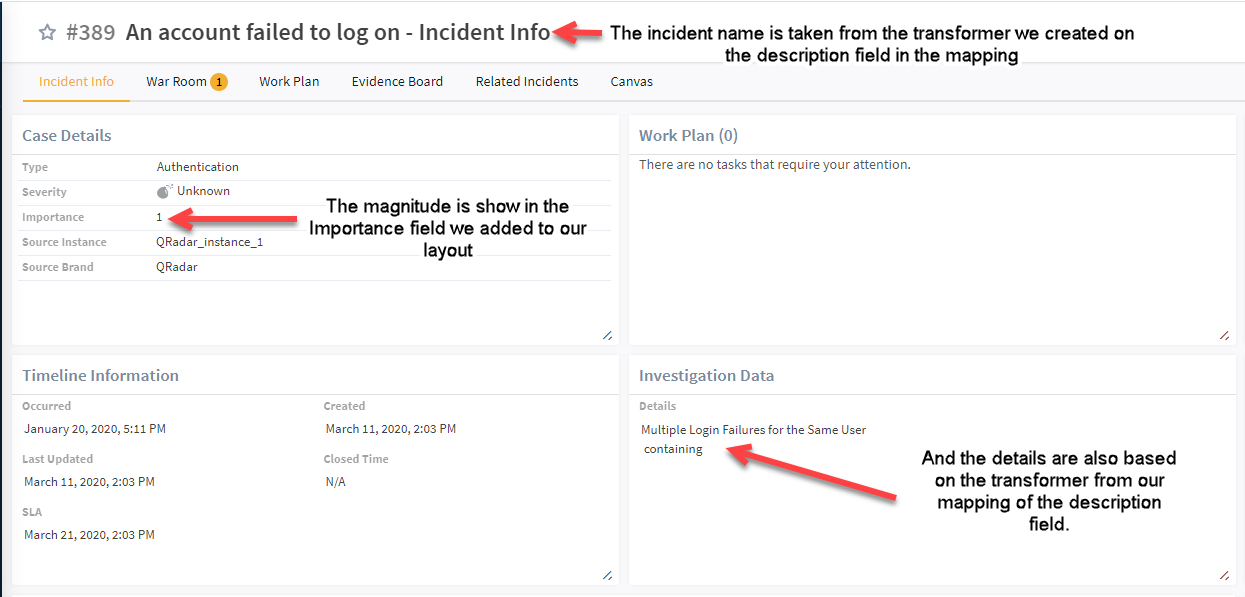Ingesting Incidents
This document takes you through a flow of setting up a SIEM to ingest multiple event types from a single source. It walks you through parts of the planning, integration definition, and classification and mapping stages of the incident lifecycle.
This document does not cover every possible scenario in this flow, as that would be impossible. We attempt to give you a real-life scenario touching on certain points from which you can extrapolate to other scenarios.
For purposes of this document, we will be using QRadar.
Configure the Incident Types#
Cortex XSOAR comes with the Access and Authentication incident types configured out of the box. However, we also want to create an additional default incident type for QRadar events that we do not map.
Navigate to Settings -> Advanced -> Incident Types.
Click +New Incident Type.
Under Name, enter QRadar-Default.
Select the Run playbook automatically checkbox.
Under Auto extract incident indicators, select Inline.
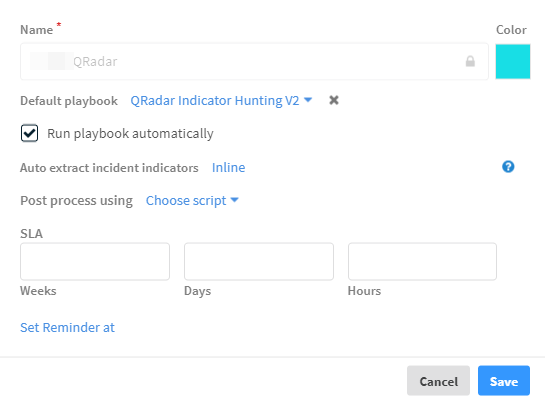
Click Save.
Incident Fields#
The next thing we need to do is ensure that we have the fields that we want for the information we will be ingesting.
Navigate to Settings -> Advanced -> Fields.
Click +New Field.
In Field Type, select Short text.
Under Field Name, enter Importance.
Under Attributes, clear the Associate to all checkbox.
In the Add to incident types field, select Access and Authentication.
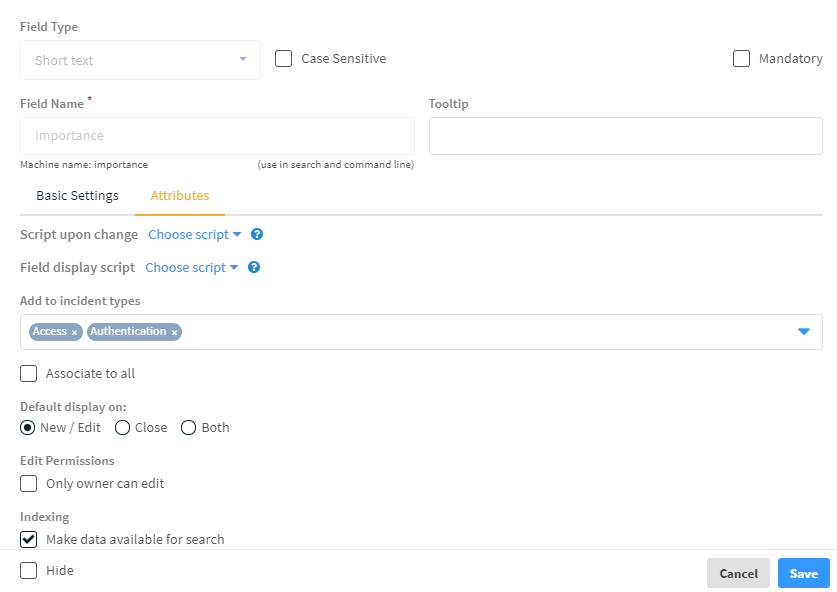
- Click Save.
Customize Incident Type Layout#
Under the Incident Types page, select the Access incident type and click Edit Layout.
In the Case Details section under the Incident Info tab, delete the Playbook field.
From the Access Fields menu in the Library, drag and drop the Importance field to the Case Details section.
Click the save icon in the upper right-hand corner of the screen.
Repeat this process for the Authentication incident type.
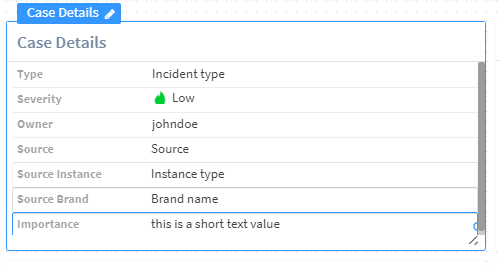
Define an Integration Instance#
Now that we have the fields that we want, and placed them in the layouts that we will be using, we need to define the QRadar integration instance from which we are fetching incidents.
Navigate to Settings -> Integrations and locate the IBM Qradar integration.
Click Add instance.
Enter a name and credentials to connect to the QRadar instance.
Select the Fetch incidents radio button.
Under Incident type, select QRadar-Default. This will be used as the default incident type for any incidents that we do not classify.
Click Done.
Classification and Mapping#
Now that we are starting to ingest incidents from QRadar, we need to classify them so they are linked to the correct incident type. In addition, we need to map the attributes from QRadar events to the fields in the incident types.
From the Classification and Mapping page, we select the QRadar instance we have configured.
When prompted to load event data, select Pull from the QRadar instance. In our case, QRadar pulls 20 instances that we can review.
We select the description attribute as the key based on which we want to classify.
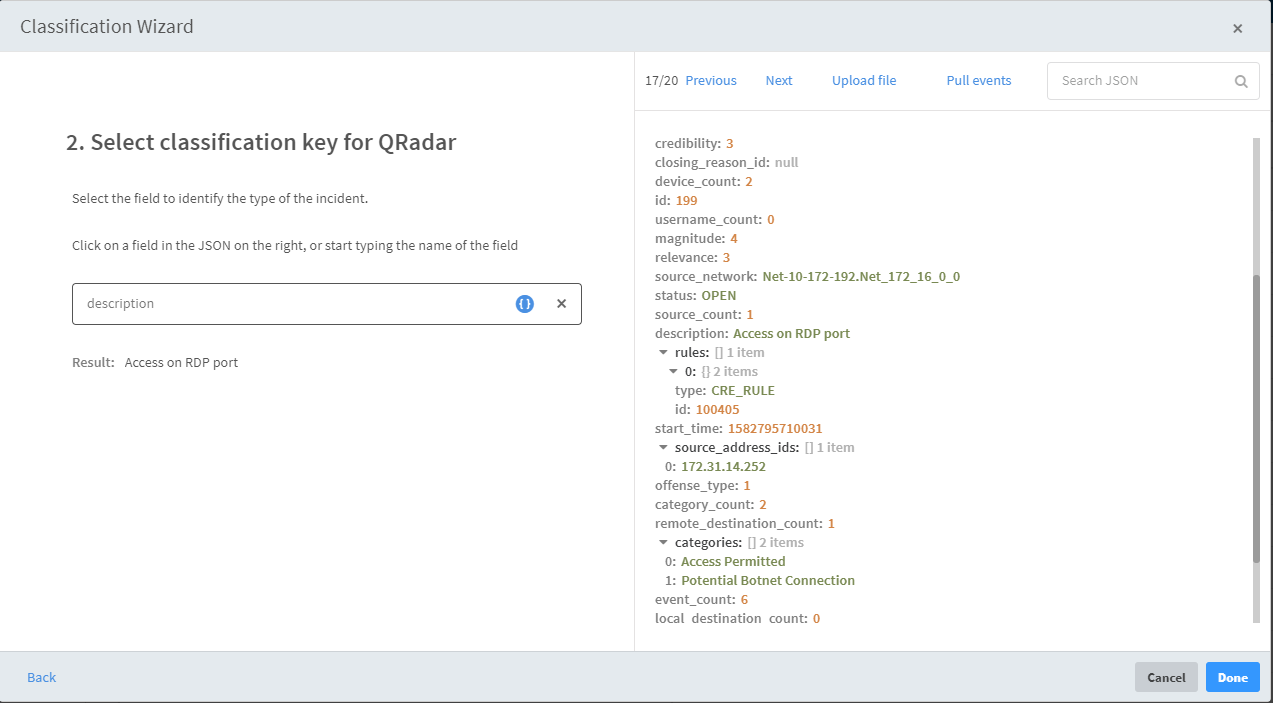
We see that this results in 6 unique unmapped values out of the 20 events that were pulled.
We drag the values, for example, Access on RDP port and Access by honeypot user to the Access incident types.
We'll place Multiple Login Failures for the Same User under authentication, and block listed hash detected in use under Malware.
Ido port scan will go under Network and DJM will be left untouched. Since we didn't provide any incident time for DJM, it will default to the incident type configured in the instance.

Save the classifier. Stopping here would mean that we have defined how events originating from QRadar are classified, but we still haven't mapped the event attributes to the fields in the incident types.
Click Create mapping to map the fields for an authentication event.
On the left side of the screen we see all of the fields that are available in an Authentication incident type. On the right side of the screen, we see all of the attributes that are available from the events.
Next to the Importance field, click Choose data path.
From the QRadar attributes, click magnitude.
Next to the details field, click Choose data path.
From the QRadar attributes, click description.
Click the curly brackets.
In the Get field, enter description.
Under Apply transformers on the field, click Add transformer.
Under Transformer, click To upper case and select the To string (String) transformer.
In the to field, enter an empty space followed by the string Failure Audit. It should look like this ( Failure Audit).
Click the checkmark icon followed by OK.
Next to the name field, click Choose data path.
From the QRadar attributes, click description.
Click the curly brackets.
In the Get field, enter description.
Under Apply transformers on the field, click Add transformer.
Under Transformer, click To upper case and select the From string transformer.
In the from field, enter a colon. It should look like this (from::).
Click the checkmark icon followed by OK.
Click Done.
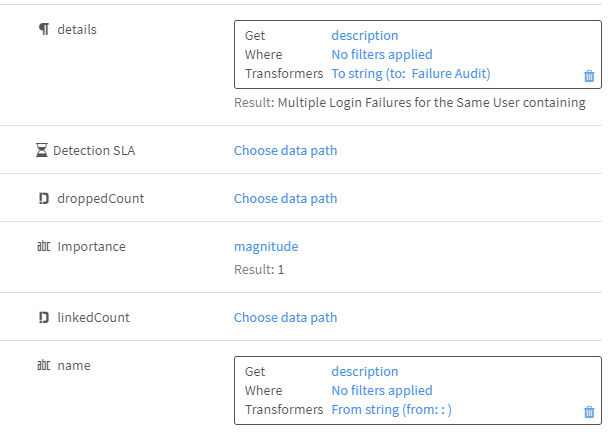
Repeat this process for the Access incident type.
When incidents start flowing into Cortex XSOAR from the QRadar instance, we see that those that we classified are mapped to Access or Authentication, and those that we did not, are mapped to the Default-QRadar incident we created above.
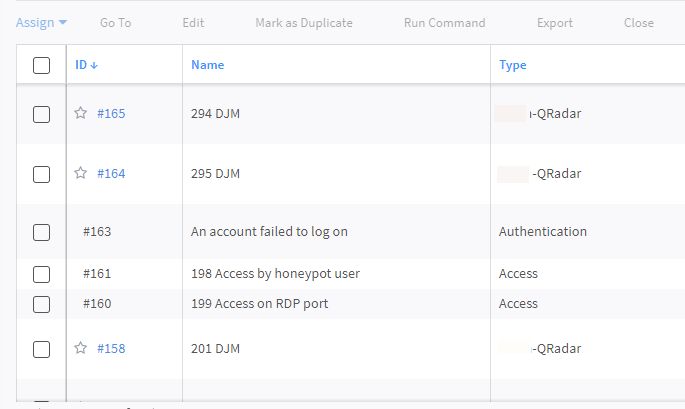
Investigate an Incident#
We can then go into one of our incidents, in this case an authentication investigation, and see how the changes we made to our layout and mapping are expressed in the incident itself. Notice that the incident name and details are based on the transformer that we created when we mapped the fields. And the Importance field, which was mapped to the magnitude attribute in QRadar is where we inserted it in the Case Details section.
